24 Hours in Lisbon
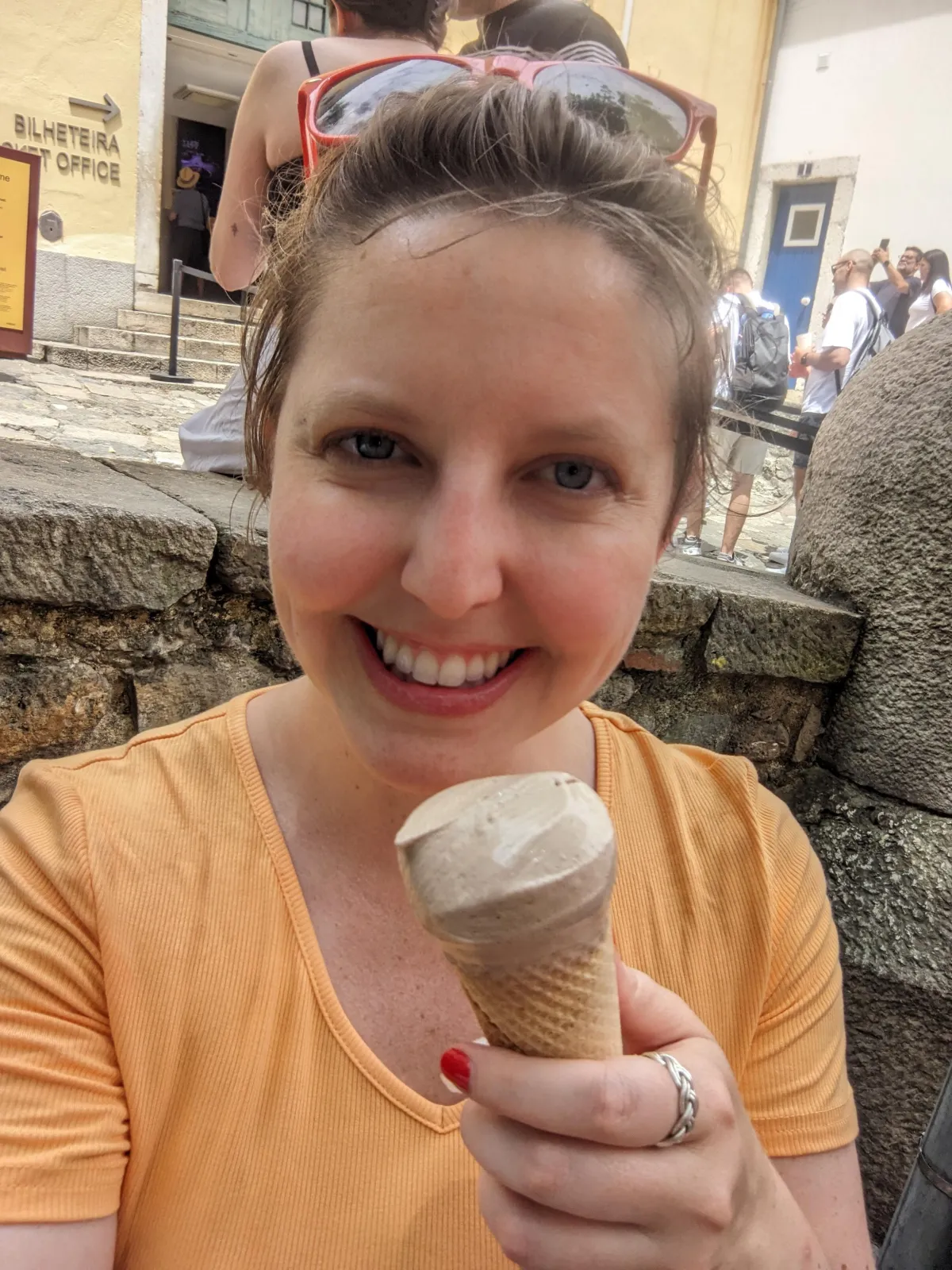
My Day in Lisbon
Arriving at 8am and leaving the next day at 10am
Lisbon was much cooler than I expected. I mean that as a compliment. European old towns are much older than the U.S. ones. Maybe that's an obvious thing to say, but you don't realize it when you don't live there, you know? The streets of the old town in Lisbon are really windy. Like they wind. Wind and wind are spelled the same so I'll just say ‘they turn a lot’. 😅 The roads are narrow in the old city. Designed initially for horses, not cars. There are also a lot of hills. The streets and sidewalks are stone. And the sidewalks in the old town are also really narrow. One person only. In places, you have to step into the street. It wasn't the best situation for someone who landed at 8am and was fighting jet lag. I tripped and fell into the street and knew I had to take myself home for sleep. 😅
My travel style also includes learning all I can about a place I visit. I feel like I get to know the place and enjoy it better. In New Zealand I listened to Andy Serkis read me Lord of the Rings. While it's not New Zealand history, I count literature from and about a place. 😁
So, because I listened to podcasts and read about Portugal, I learned some cool things.
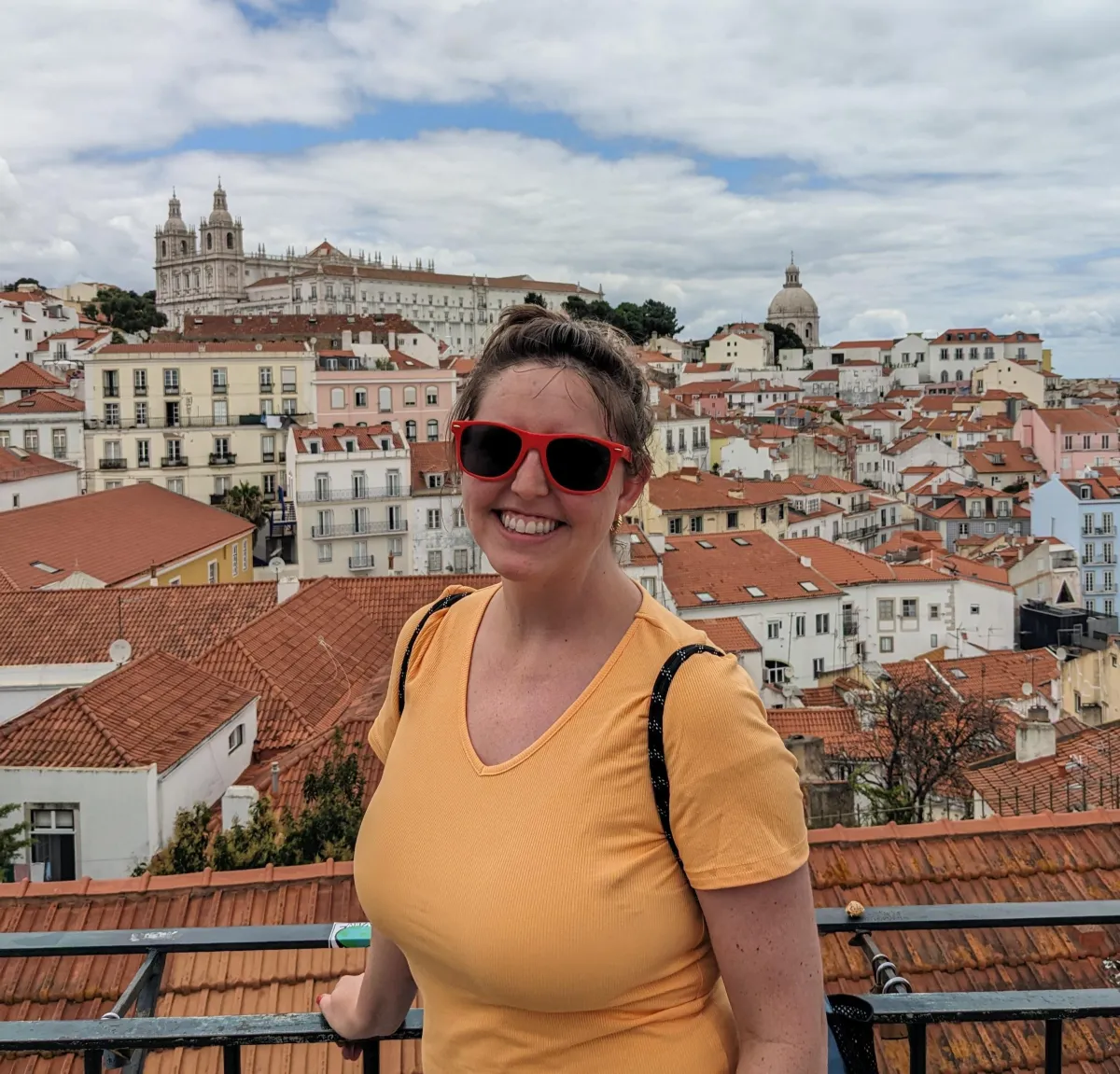
Things I Learned About Portugal:
Portugal produces half of the world's cork! Which made sense when I walked around the souvenir shops.
Portugal has the oldest unchanged European border, established in 1297 and hasn't changed since.
There’s Moorish and Spanish influence in their architecture. That one isn't something I learned, but something I appreciated as I wandered around. The Iberian peninsula has a lot of North African & Christan / Catholic influence in their history and it shows.
The Phoenicians were thought to be the first to establish a trade post in Lisbon, then the Romans (always the Romans when you're in Europe), then the Moors, then the Moors were expelled but Christian armies. Lots of crusades to ‘purify’ Spain and Portugal from Moorish influence.
As a country with a lot of coast, they eat a lot of fish, which I didn't try. But one Portuguese treat I did try was their Pastel de nata. A tart invented in a monastery in the Belem neighborhood of Lisbon. The story I heard said the monk was experimenting with extra eggs they had? Anyway, it's a custard tart with a slightly burnt top. I didn't go to Belem, but I tried one in the old city. It was good!
Also with a lot of coast, for being a smallish country, they have a big legacy of exploration. Prince Henry the Navigator was given that nickname because he encouraged and funded exploration.
Vasco de Gama (sailed around southern tip of Africa to get to India) was Portuguese.
I learned that it was the Portuguese that introduced tempura to Japan.
I learned in 1755 on All Saints day, a religious holiday, there was a really bad earthquake that destroyed most of Lisbon. Alfama was pretty much the only area that was unaffected. Because of the damage and death, and because it happened on a religious holiday, it shook many people's faith in God. Pun not intended.
Voltaire’s novel, Candide was inspired by this earthquake.
I learned one of Lisbon's nicknames is ‘the Morocco of Europe’ though I'm not sure how ubiquitous that nickname is…
I said I'd spare the history lesson… but not all of it because knowing the government structure seems important: in Portugal there was a monarchy until 1910, then a republic from 1910-1926. In 1926, because the republic was unstable, António de Oliveira Salazar took power and ruled as a dictator (along with a successor) until 1974.
In 1974 Portugal had a peaceful revolution. There was a military coup, officers overthrew the previous dictatorial regime which ultimately resulted in democracy, and a release of control of Portuguese held African colonies. This revolution was nicknamed ‘the carnation revolution’ because a restaurant owner handed out carnations to soldiers stationed when people took to the streets to celebrate the end of dictatorial rule.
So ....
-Phonecian trading post abt 800 bce
-Romans conquer 250 bce
-Moors / Berbers conquer 714 ce
-4 month siege ends in Christian control and monarchy 1147- 1910
-Republic 1910-1926
-Dictators 1926-1974
-Democracy 1974-now
-Since the democratic turn in 1974 the economy has grown kinda slowly.
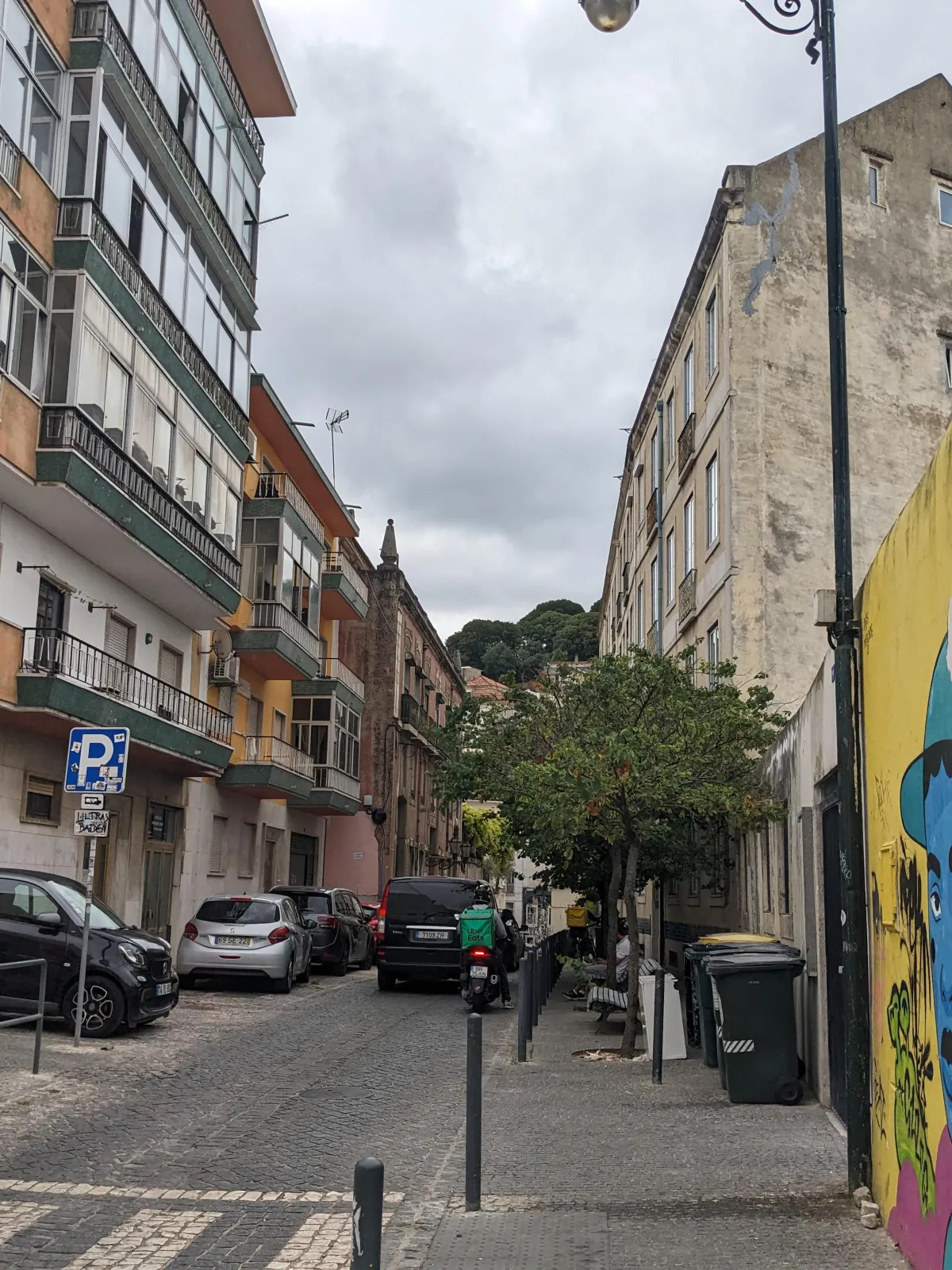
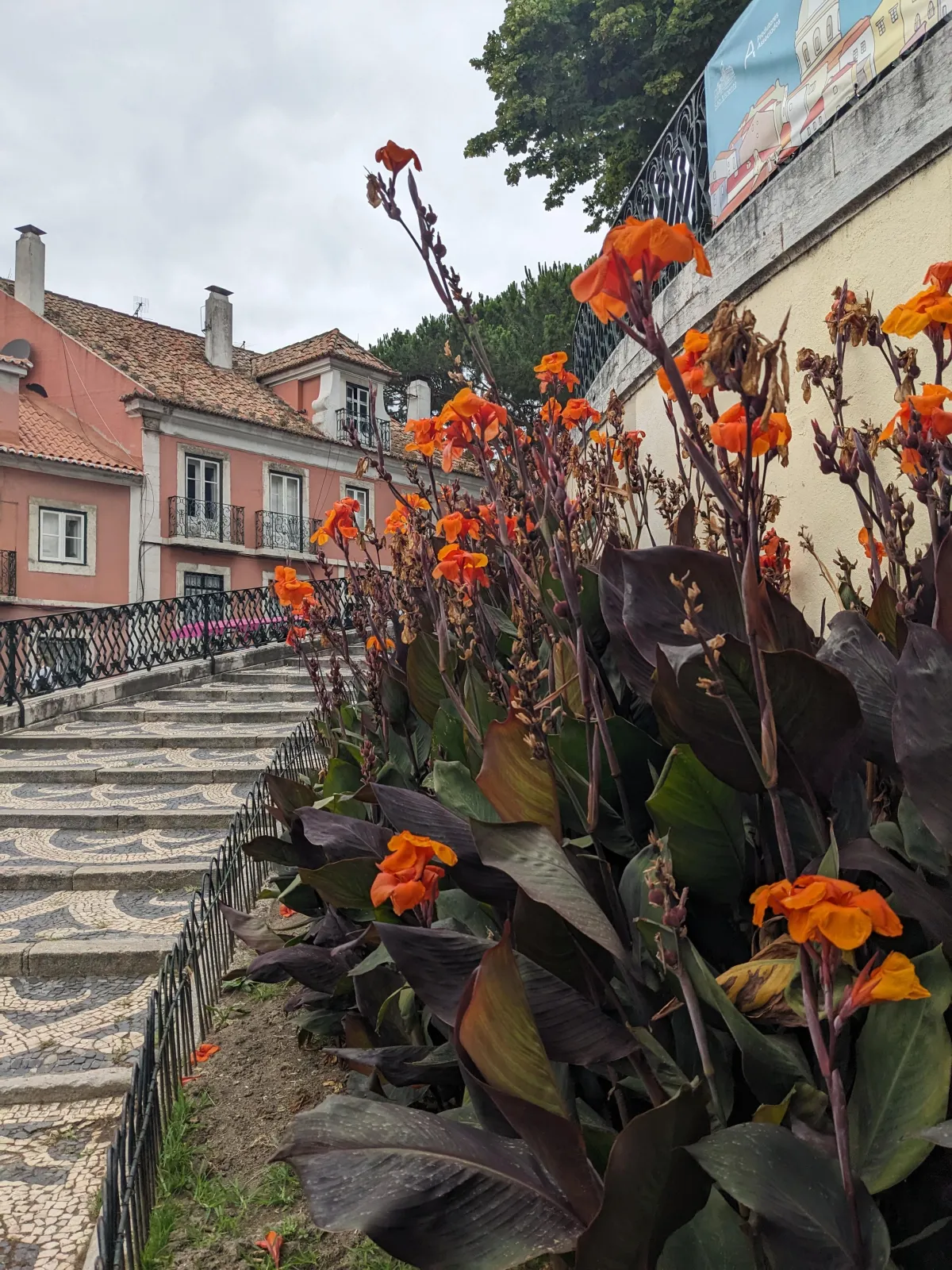
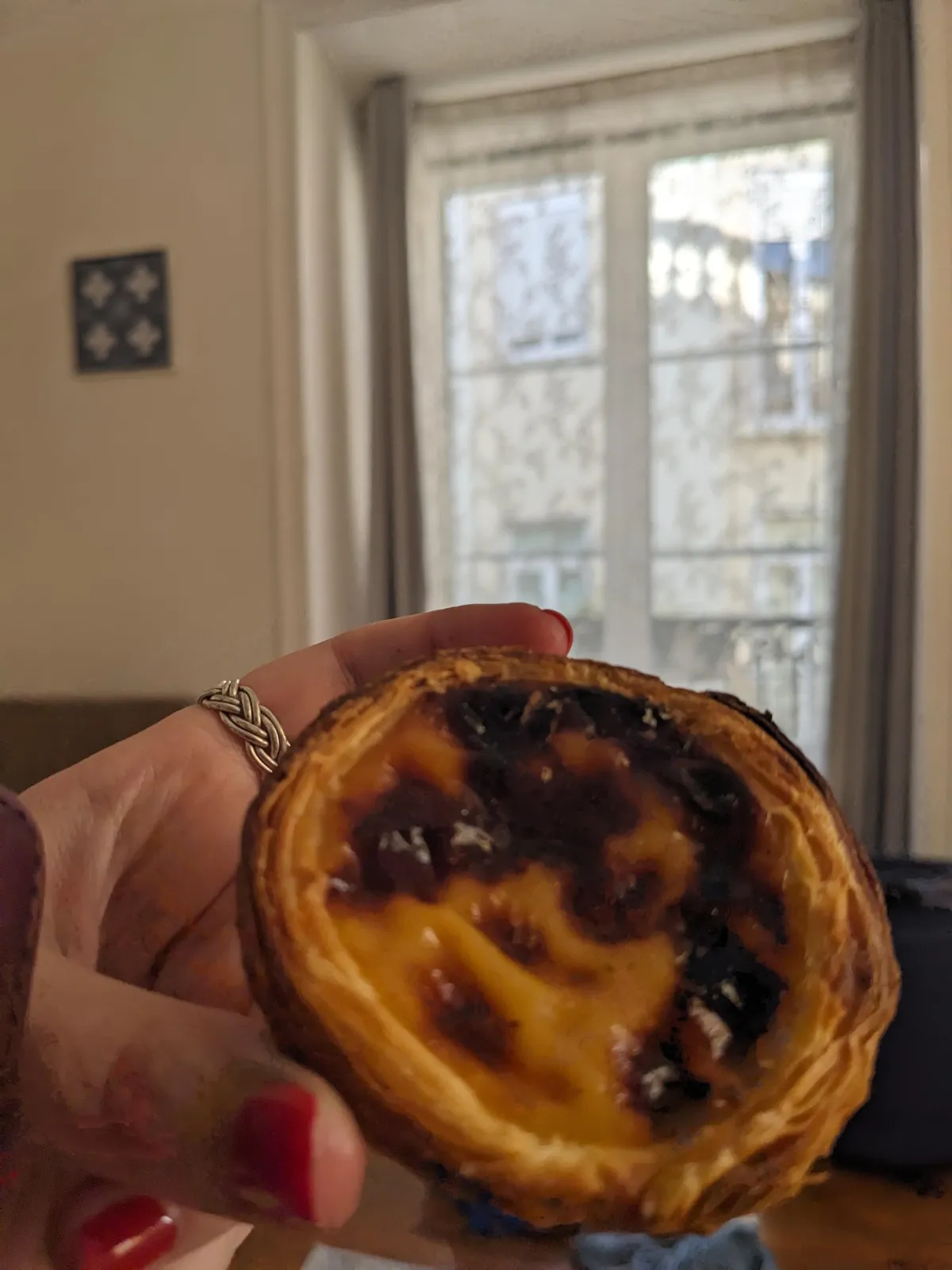
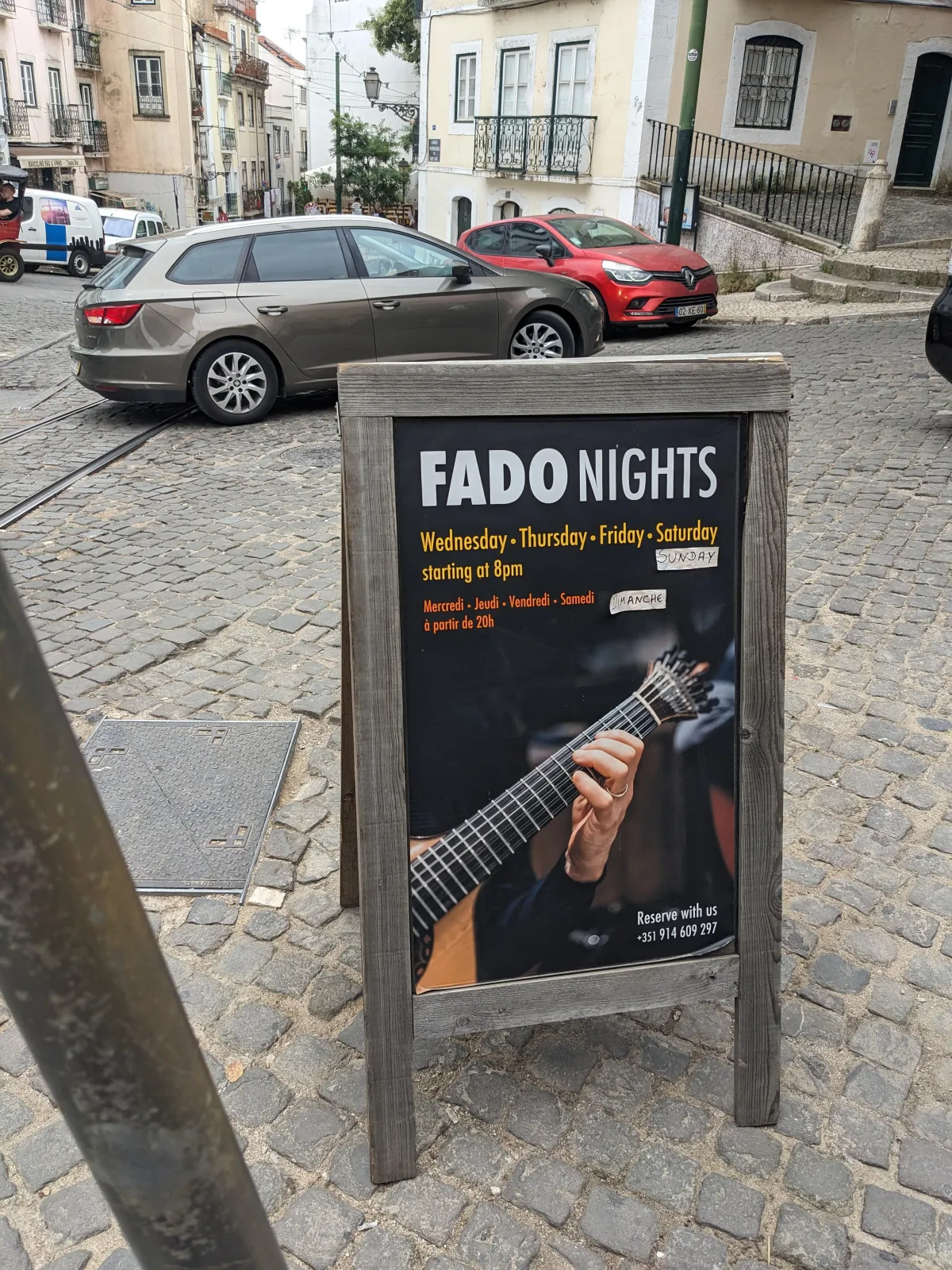
The First Thing I did in Lisbon
One of the first things I did in Lisbon was walk up to Miradouro da Graça. There is a lot of urban art and street art as you walk up all the steps. At the top, there was a cafe, a little market, and buskers. The view of the city from up there was amazing. Lots of people were there to take in the views. Lots of people speaking French in both Portugal and Spain. Not sure why that surprised me, France is real close.
At the top of the lookout over the city, I saw a woman crying with her husband and two kids. I thought about how often I go to a place to see the view and the nature or learn about the history of the city I'm in, but I don't look so much at the individuals. So, while I'm sure she didn't want people to notice her crying, it seemed like a heartache cry. And I could relate on some level to that. So I took a moment to feel that a little bit and connect.
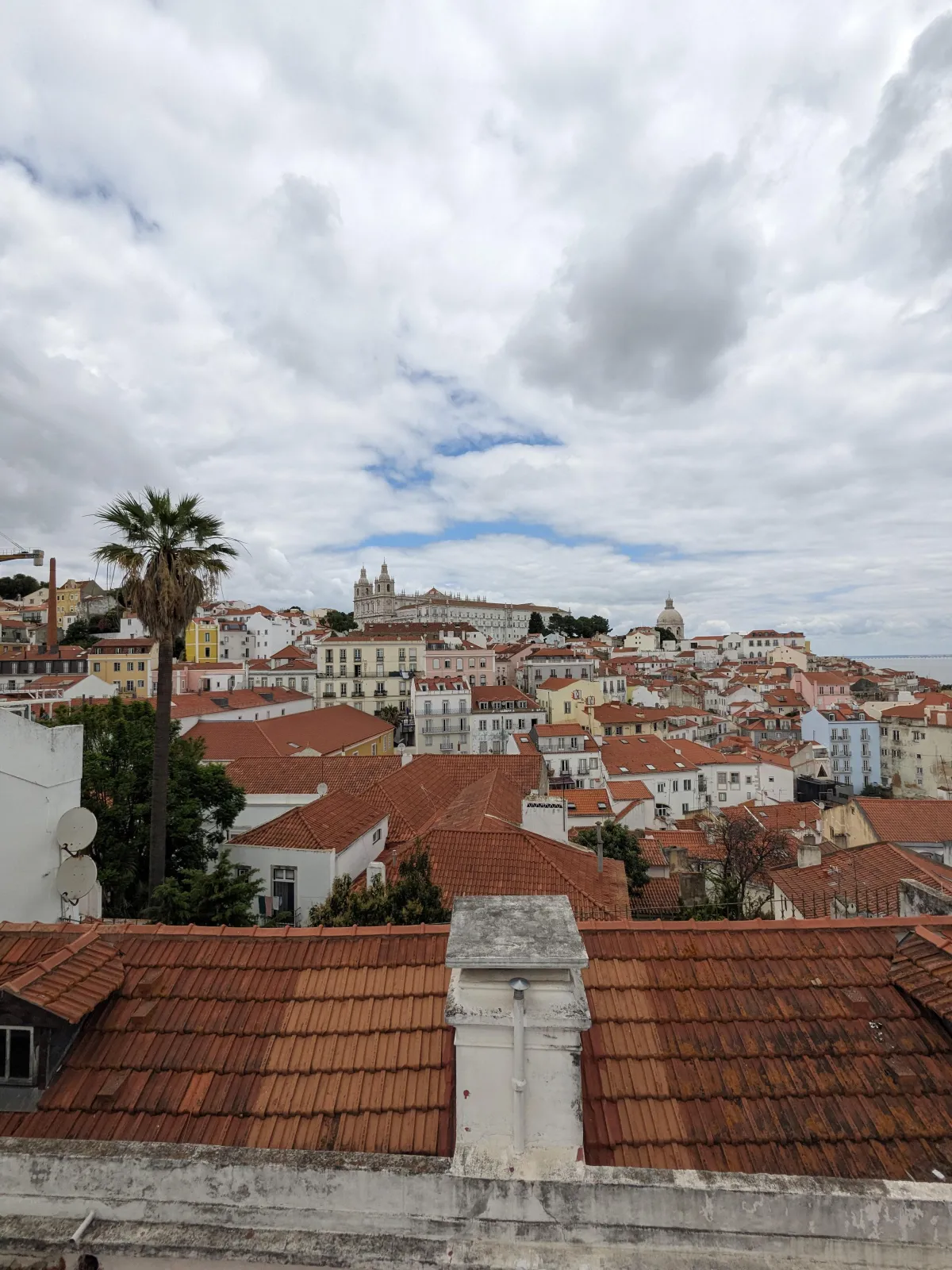
Exploring the Old City: Alfama
From the lookout, I walked past the Jardim de Gracia.
One quarter of the old town is known as the Alfama. It's the oldest part of Lisbon. It probably comes from the Arabic word ‘Alhama’= meaning baths or fountains. This is the place where a type of music known as Fado was born. The source I listened to compared it with blues. Deep nostalgic longing in the style of music. They have casas de fado in Lisbon where you can eat dinner and listen to enjoy the music.
I had brunch in the Alfama district next to a famous piece is street art - a pavement mosaic. Here's what I found online about it:
“A tribute to one of Lisbon’s most iconic faldo singers, the cobblestone street art of Amália Rodrigues on Calçada do Menino Jesus, is a must see in the Alfama neighborhood. Unlike many of the other Lisbon street art examples, this work of art is not painted, but meticulously crafted from cobblestone tiles. Created in 2015 by artist Vhlis, this lovely portrayal of the famous singer’s face is created with thousands of tiny square tiles… Some say when it rains in Lisbon, Amália Rodrigues appears to be crying in the street mural.Rodrigues, who died in 1999, was a Portuguese actress and Fado singer, who achieved highest honors in Portugal and worldwide during her lifetime.”
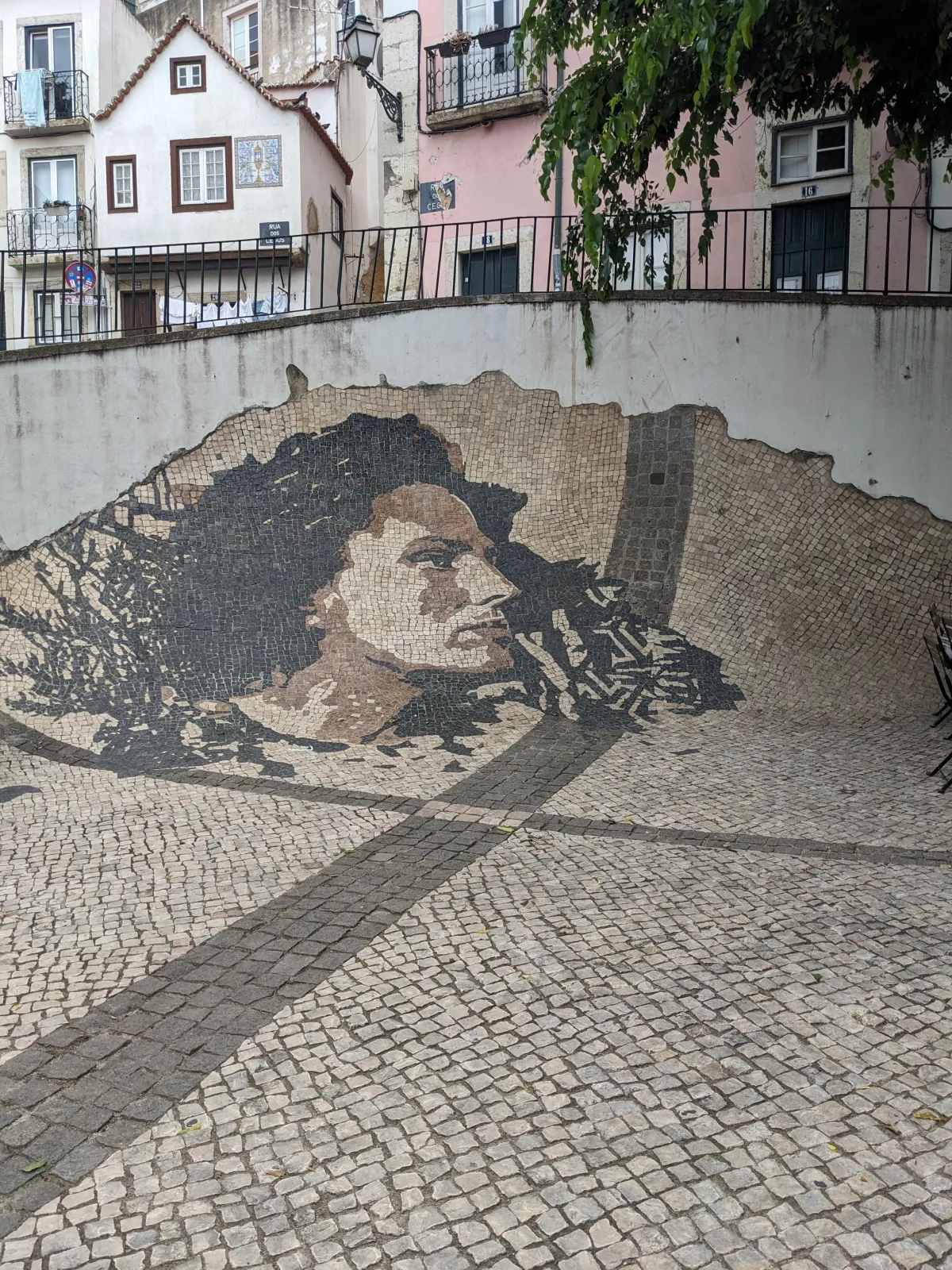
As I ate brunch I realized I missed eating at a cafe on the street. I know they say if they’re on the street beckoning you in, or if the menu is in English, the food probably isn't very good. But I thought brunch was lovely. :)
Believe it or not I had nothing planned in Lisbon. I didn't do much research other than a place to stay near the port. I thought it would be fun to learn and wander as I went. I also didn't want to put any pressure on myself in case I was dead tired after an all-night flight.
The weather was perfect and I loved just wandering. It seemed like Lisbon called for listening to classical music while wandering. I did a few podcasts about Lisbon too. Per usual.
There are lots of scenic spots in Lisbon, Miradouro portas de sol (miradouro = viewpoint). Miradouro de Santa Lizia. These are both next to the cruise port, so they were pretty crowded. I found a street artist next to the Miradouro de Santa Lizia, he only accepted cash, because I couldn't stop thinking about his art, I went to an ATM and then came back with 5 euros :)
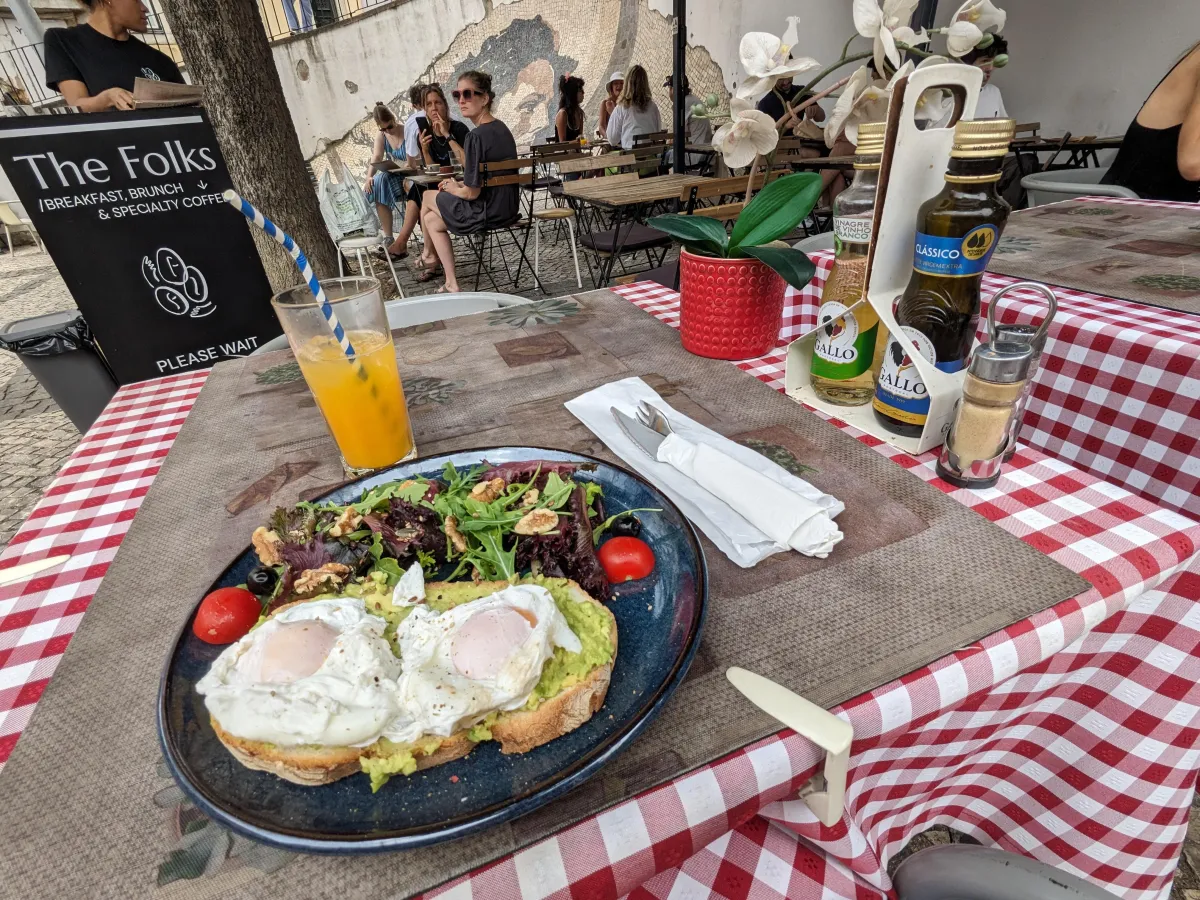
There are lots of tiles in Portugal. Also Morocco and Spain which were other stops on this same trip. It was the Moors who influenced and introduced using tiles all over. Because of their Islamic beliefs, they don't use iconography, so their religious art and architecture has a lot of geometric patterns. The Portuguese adapted the Moorish style but also sometimes include images of people and scenes.
I walked up by the Castillo Sao Jorge which was built for the kings of Portugal, and later, the Moors established it as a fortress. Portuguese kings lived here for years.
I was able to explore until the afternoon, and then my feet started to drag and the streets seemed less easy to navigate. Made me think about how the old city isn't really a place for people who have mobility issues. Which is sad.
Anyway, that's a lot for only a few hours of exploration! I took a picture of what my Airbnb host recommend to see in case anyone is interested in creating their own itinerary.
I think if I had more time I would've gone to explore Belem.
Anyway, go here to read about the rest of my cruise
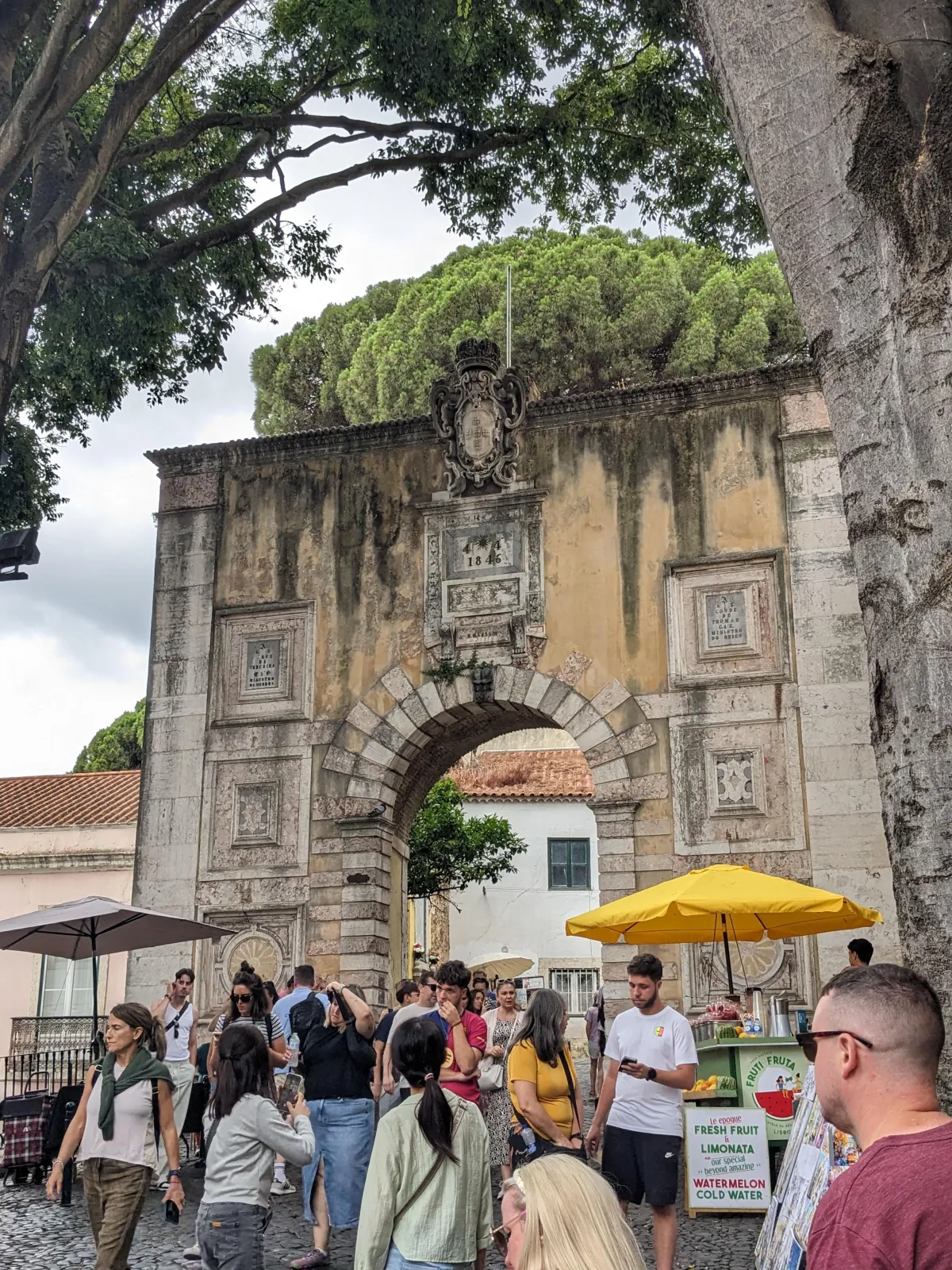

About the Author
Hi, I'm Tara-
I want to be a different kind of travel advisor.
One who shares information and education and empowers you, rather than one who is motivated to make money off of you.
I want to share what I've learned. What I believe makes the best trip, how to get deals, travel on a budget, I would definitely consider myself an expert in that department.
You can read a lot of my tips and tricks for free online through my blog. If you want to consult with me about a trip, I'll charge a fee to help you plan, but I'll leave the actual booking up to you. That way you know the advice I give is not motivated by commission.
Follow along for my stories, tips, and tricks!
COMPANY

© Copyright 2025. All Rights Reserved.